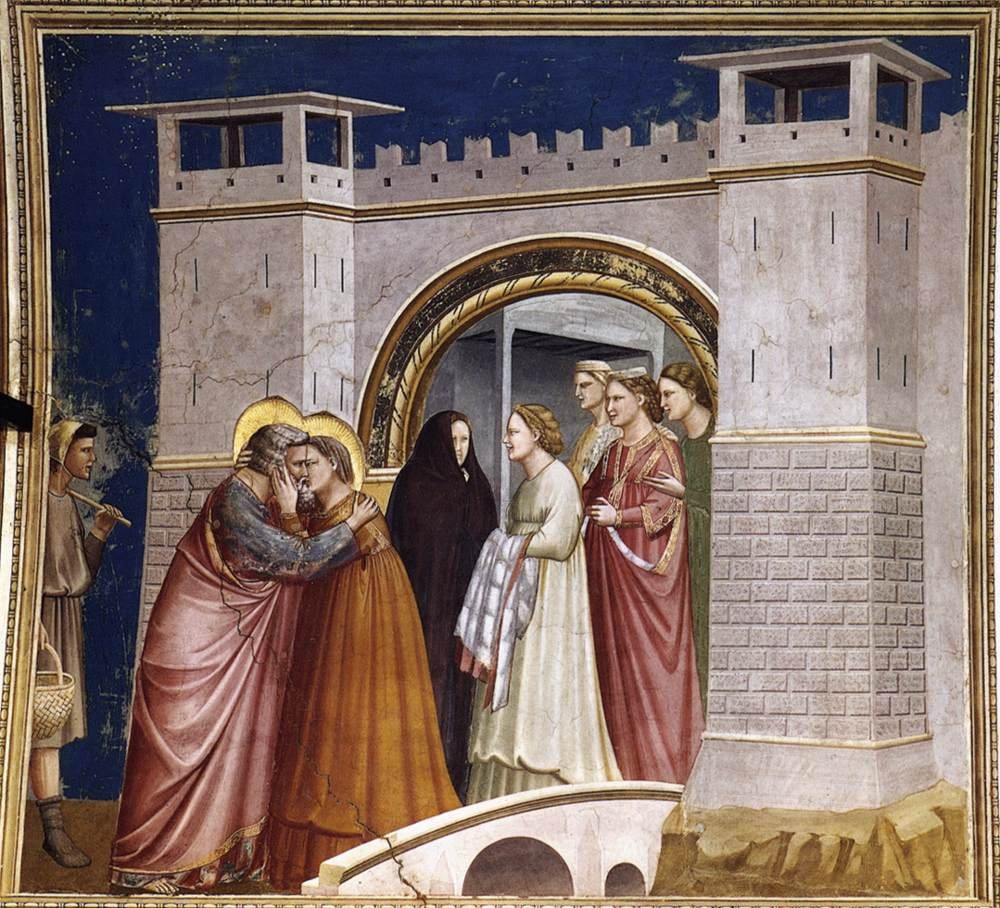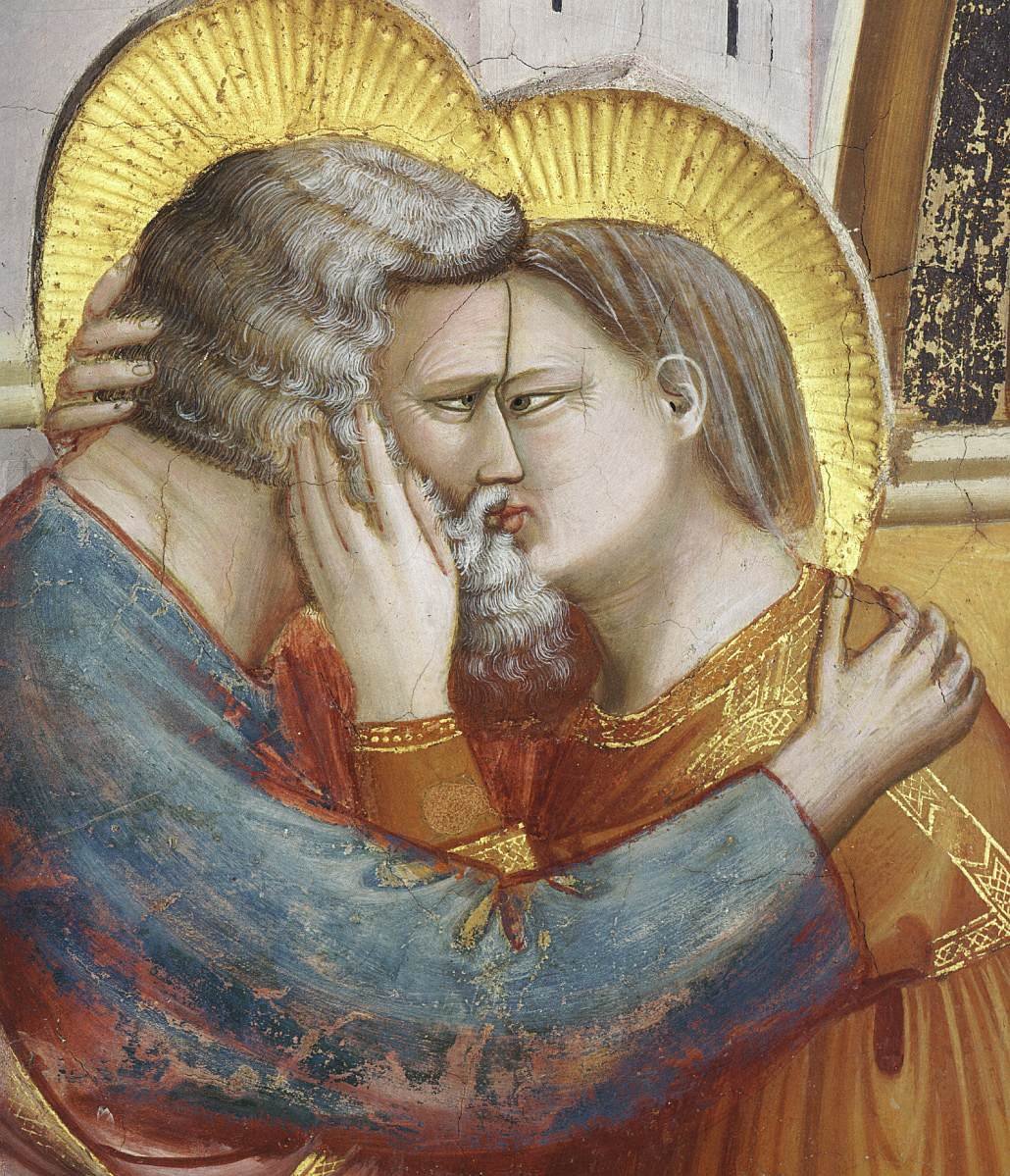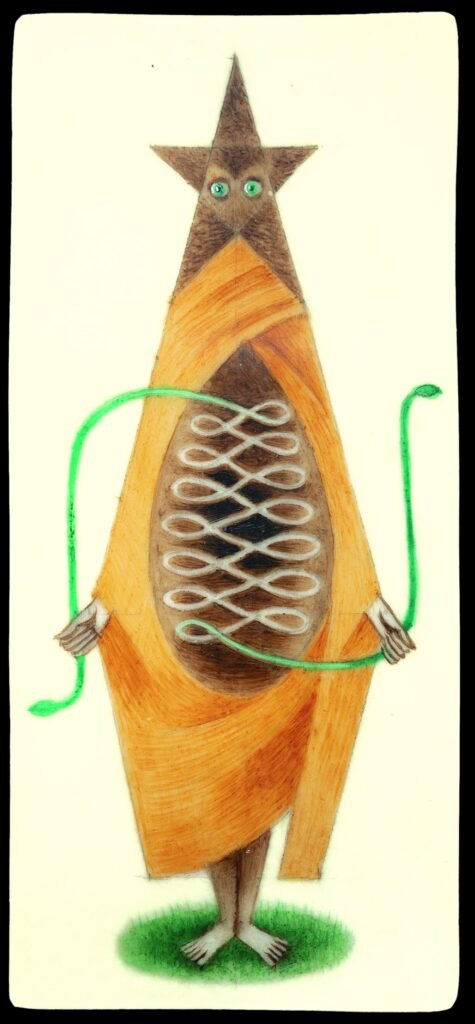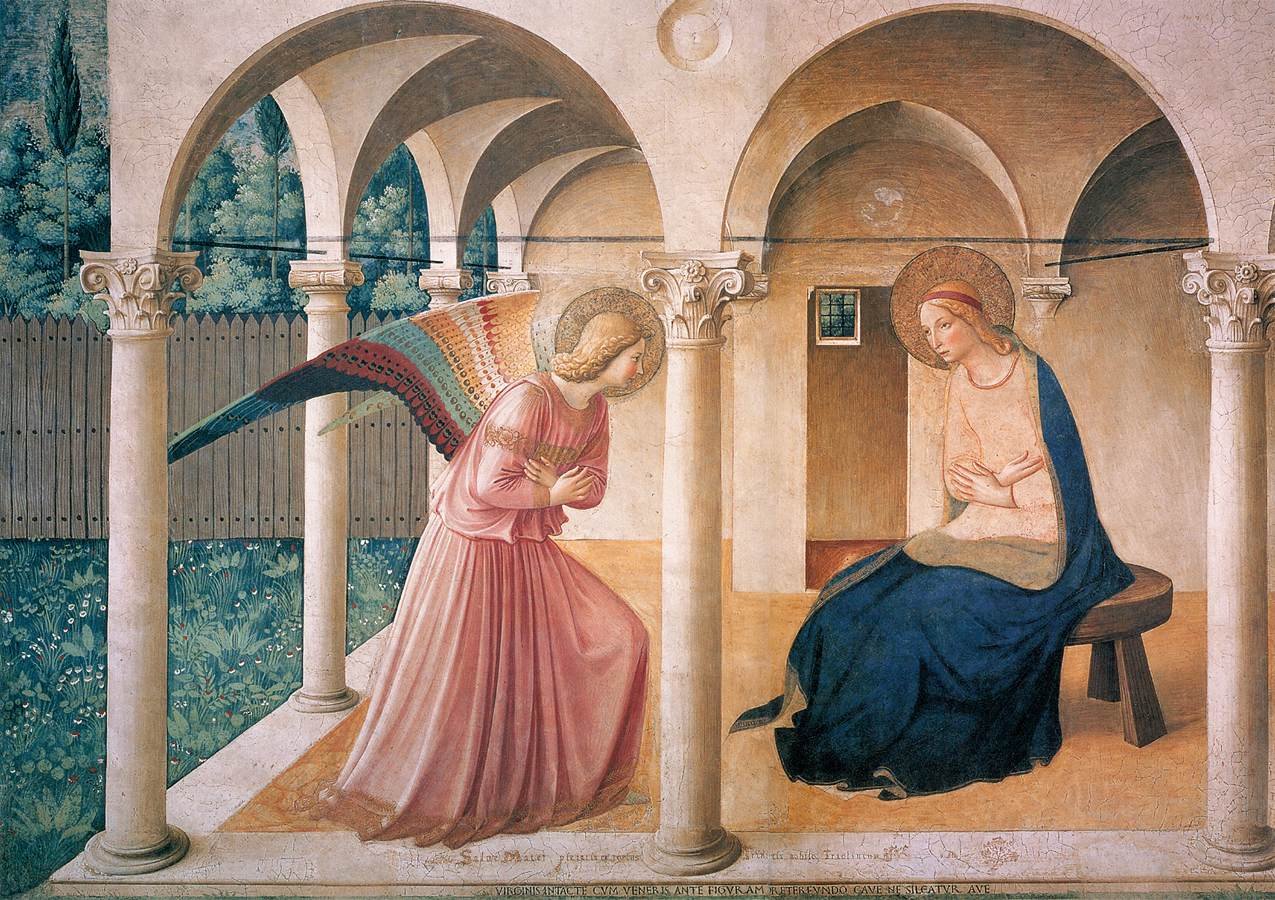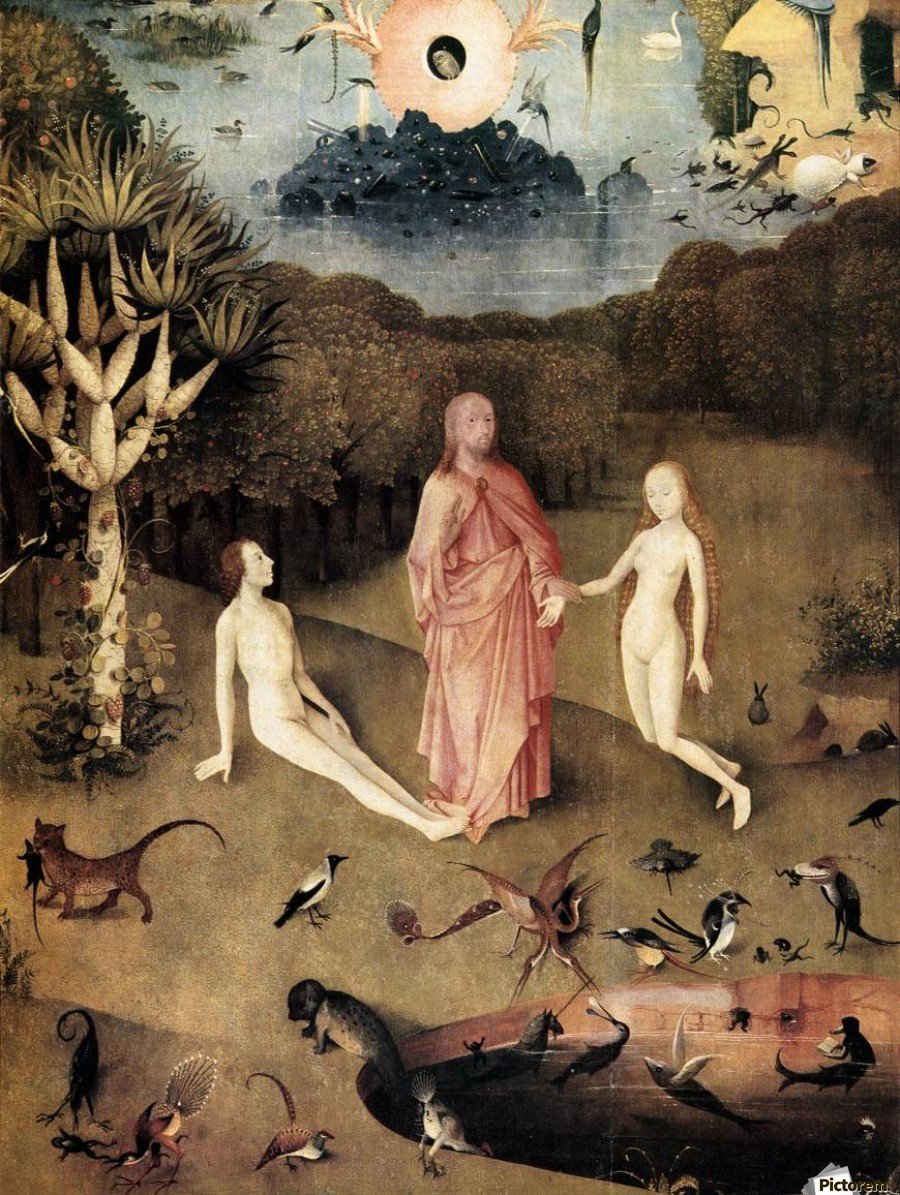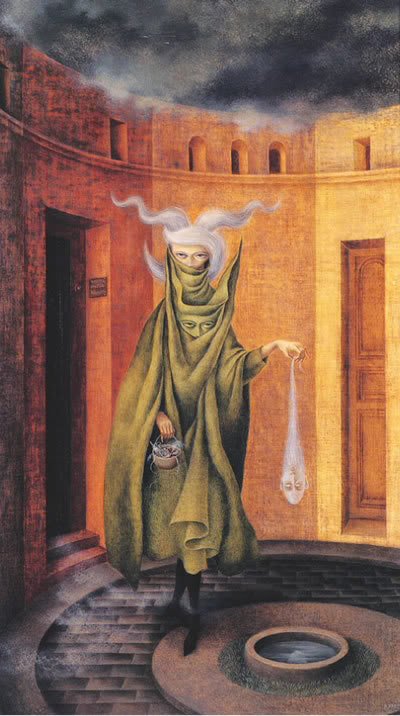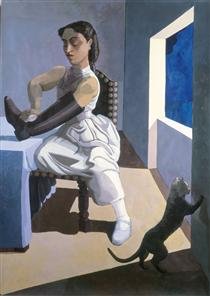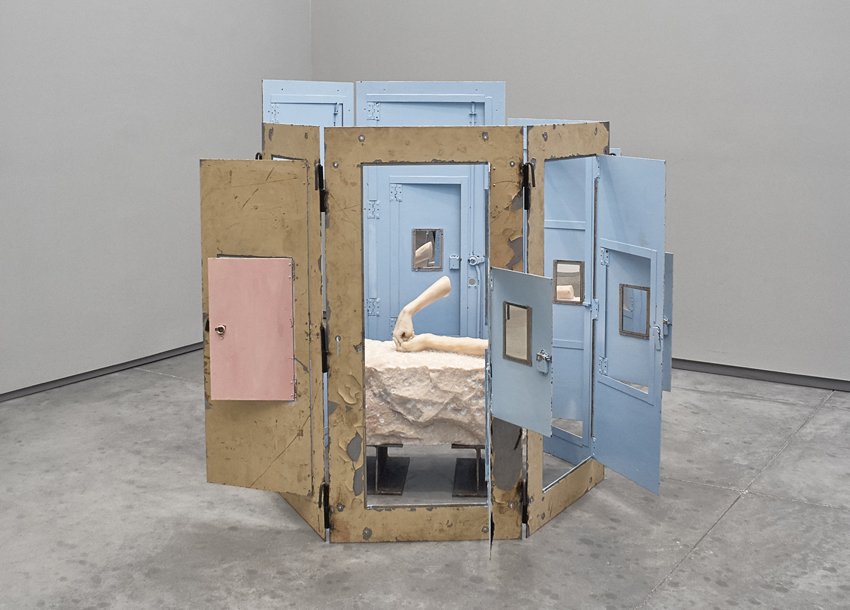Notes on Painting
GIOTTO (1267-1337) ITALIAN
SCENES FROM THE LIFE OF MARY: 6. MEETING AT THE GOLDEN GATE
1304-06
FRESCO, 200 X 185 CM
CAPPELLA SCROVEGNI (ARENA CHAPEL), PADUA
Giotto’s Meeting at the Golden Gate is a panel from his fresco cycle at the Cappella Scrovegni (Arena Chapel), Padua, Italy completed in the late Middle Ages around 1305. Painting at this time still adhered to medieval principals which essentially represented religious, rather than human experience. The importance of the figures was fixed by canonical tradition so that the most significant figure in the painting was the largest, with all other figures portrayed diminishing in size regardless of their position within the pictorial space, similar in concept to ancient Egyptian art. Giotto’s figures instead occupy perspectival space such that figures appear in the foreground and middle ground and diminish in size as they recede in distance. Figures and objects overlap, where one object covering another denotes closeness. Architecture is represented through linear perspective creating spaces in which narrative is staged. We take all this for granted when we look at a Giotto but his perspectival experiments appeared 100 years before its mathematical form was established. The effect on the representation of reality cannot be understated. The viewer could tangibly sense space. Figures occupy a ‘living’ space in which the drama of life unfolds.
In The Meeting at the Golden Gate, Giotto situates us as onlookers at the centre of the drama, the moment Joaquim and Anna (the Virgin Mary’s parents) are reunited after months apart. Joaquim and Anna were a barren couple, they had been persecuted, forcibly separated and were bereft. They were seniors. Giotto gives them crow’s feet and silver hair. Here we see their reunion at the Golden Gate. Their kiss, the first kiss to have ever been painted, is the moment of the immaculate conception of the Virgin Mary. Their kiss is loving, felt and miraculous. Two become one. Remarkably it is also a proto cubist image. Not only is this image formally and conceptually significant but in its portrayal of the loving reunion of an elderly couple we see its humanity.
REMEDIOS VARO (1908-1963) SPANISH/MEXICAN
By the time of her sudden death in her prime at 54 years old, Remedios Varo no longer considered herself a surrealist, though her life and work had been deeply informed by surrealism, not only through her marriage to the surrealist poet Benjamin Péret who was a close friend of the godfather of surrealism Andre Breton but also in the compositional techniques of surrealism including chance operations, dream interpretation, esoteric knowledge, psychoanalysis and painterly techniques such as collage and foliage. Like her close friend Leonora Carrington a like minded female painter and refugee from war torn Europe, Remedios Varo would have found the theoretical and judgemental side of surrealism extremely distasteful.
Varo used many sophisticated painting techniques to achieve her rich, meticulous painted surfaces including building up thin layers of paint like the tempera techniques employed by medieval and early Renaissance painters such as Fra Angelico. She used fine tipped paint brushes for painstaking detail work similar in effect to the detail found in the Garden of Earthly Delights by Hieronymus Bosch, a painting that she was obsessed with early on in her art studies. She also used the surrealist technique of decalcomania and foliage wherein botanical specimens such as leaves and moss are pressed into wet paint to produce a mottled organic texture creating a detailed yet indefinite surface as if looking at a forest through misty glasses. But it is in her compositional techniques that we really see Varo’s roots in surrealism. From the explicit reference to psychoanalysis in Woman Leaving the Psychoanalyst (1960) to the implicit reference of esoteric alchemical knowledge in The Laboratory (1947) It is perhaps with her painting of a tarot card that we see how chance operations, divination and storytelling directly play in her work. Carta de tarot (Tarot Card) 1957 shows the figure of a magician painted in oil on a piece of hippopotamus bone. The bone itself resonates with symbolic properties, reading the object, like reading the tarot cards all point to Varo’s own picture making as a reading activity. With over 45 billion views on TikTok hashtag #tarot demonstrates there is a cultural appetite for divination. The chance operations of tarot speak of our times of competing narratives, archetypes, the psyche, chance and storytelling. Chance operations, surrealist techniques and arcane knowledge are key practices in contemporary theory and practice. In the work of Remedios Varo these practices set the stage for a complex of narratives to play out, like the contemporary fairy tales of Paula Rego or psychodramas of Louise Bourgeois, the narrative is staged and the sleight of hand is in the staging of the transformation between the viewer and the narrator.

